Tennis Injury Prevention and Treatment
Hollywood, FL Tennis Chiropractor
Tennis is one of the most popular sports in South Florida and one of the best non-contact sports that you could participate in due to the demands on cardiovascular health, agility, mobility, and power all in one sport. With all of these parameters involved with the sport, however, it is very important the proper body mechanics are developed in order to keep you injury-free on the court and performing at your best for years to come.
 Physical Demands of Tennis
Physical Demands of Tennis
Spine
Because Tennis is such a dynamic and variable sport, having an appropriate range of motion in the spine is crucial. Though tennis is primarily a rotation sport, proper flexion, and lateral flexion are also required. Much of the power and efficiency in tennis is dependent upon good core stability through the lumbar spine coupled with mobility through the upper and middle back. Excessive rotation of the lumbar spine in the absence of core stability can result in increased sheering force through the spinal segments and ultimately an increased likelihood of injury.
Hip
Tennis requires regular twisting, sprinting, cutting, changing directions. Much of the force of a strong forehand, backhand, and serve come from the power of hip rotation. If hips do not have the appropriate mobility to twist, your body may put that rotational force through the knee or the lower back, both of which are only meant to rotate very little. Hip Motor control and stability are required for starting and stopping force to be efficient and to protect your knee and ankle when changing direction.
Shoulder
The shoulder joint is heavily used during the sport of tennis during all aspects of hitting the ball (Serve, volley, groundstroke, etc). For example, in order to execute a safe and effective serve, the shoulder, shoulder blade, and thoracic spine must work together during both the cocking phase, strike, and follow through. Because many of the shots in tennis require a strong internal rotation force, oftentimes it is necessary to strengthen the external rotators of the shoulder in order to balance the musculature, center the joint and prevention injuries in the shoulder complex.
Elbow
The most common injury known to tennis players is lateral epicondylitis also known as “tennis elbow”. ⅓ to ½ of all tennis players recreational and competitive suffer from elbow pain at some point in their career. Ofter times this lateral elbow pain is due to overuse of the forearm extensors. It is crucial for tennis players that not only is there appropriate active supination and pronation of the wrist but that the forearms flexor (palm side) and extensor (top of forearm) muscles are balanced.
 Most Common Injuries in Tennis
Most Common Injuries in Tennis
- Lateral Epicondylitis
- Rotator Cuff Tendonitis
- Shoulder Impingement Syndrome
- Patellar Tendonitis
- Hamstring Strains
- Lower Back Pain
- Ankle Sprains
- Achilles Tendonitis
In general, the majority of the injuries that an individual will experience throughout his or her tennis career will be overuse injuries rather than a traumatic injury or an acute injury. The mechanics of tennis are very repetitive in nature which leads to overuse of the arm, shoulder, and hip, generally on the dominant side.
Below are a few examples of the Treatment and Rehabilitation Exercises that we use with our tennis players
Banded External Rotation with Step
D2 Shoulder Flexion/Extension
Pallof Press
Step Up Variation

